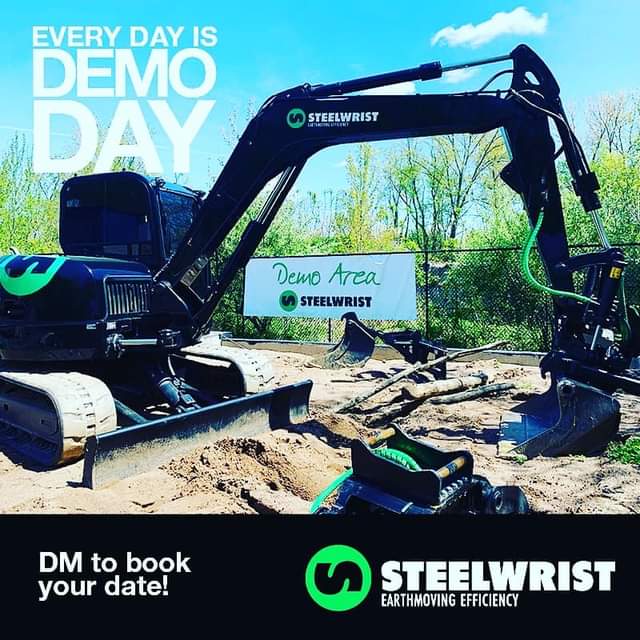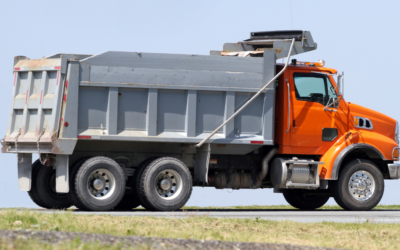Building Your Dream Fleet: 10 Things to Know Before You Build

A truck fleet can be profitable enough to generate high profits. The demand, economy, and commercial reality of the country prove it. As the population grows and the demand for construction projects increases, there will be a significant need for heavy machinery and trucks to get the jobs done.
When you want to start and grow a fleet from scratch, there are many factors to consider. Many entrepreneurs start with a truck with the plan of increasing their fleet and generating big bucks. This equipment can cost you an arm and a leg, and if you try to grow too fast without the right gameplan, you can end up bankrupt, as many companies do. The truth is that it takes a few steps for these simple ideas of entrepreneurship to achieve a specific goal: to consolidate as a transportation company.
Today we share with you 10 tips that will help you build your dream fleet or improve it if you already have one:

10 Tips To Help You Build Your Dream Fleet
1. Financing V.S Leasing V.S Cash
Choosing which financial instrument you will use to purchase your equipment is one of the most critical decisions for growing your business. Most construction and trucking companies tend to lease over financing and paying cash. The most significant expenses when it comes to trucking are employees and repairs. Especially when it comes to repairs, payments can easily cost over $20,000, so it is vital to have cash in the bank for these emergencies for when these events happen. It is only a matter of time before you see your first big bill at the mechanic. Choosing to finance and lease over paying cash allows you only to pay 5, 10, 15, or 20 percent downpayment of the total cost of the equipment. This leaves more money in your bank. Between financing and leasing, things can get confusing. If you want a more detailed understanding of the difference between financing and leasing, click here.
To explain it more simply, both are borrowing instruments with the same rates and terms, but leasing creates an expense, whereas financing creates a liability. What’s the difference? Let’s say you finance a $100,000 truck from the bank. What is happening is that the bank is lending you $100,000, and on your credit bureau, it shows that you owe the bank $100,000 (plus fees and interest). Owing $100,000 is a liability for you, and it makes borrowing more difficult in the future. The bank will look at your debt and see you already owe $100,000. Let’s say you lease-to-own a $100,000 truck from the bank. What is happening is that the bank is purchasing a $100,000 truck and leasing you the truck for a monthly fee. It does not show that you owe the bank $100,000 (plus fees and interest) on your credit bureau. It shows that you have a monthly expense of, let’s say, $2,000, which is an expense, not a liability. If you bring in high income that covers your expense, it is easier to borrow than taking on high liabilities. At the end of the lease-to-own term, there is usually a buyout option to buy a truck for $100. For fleet owners who are looking to grow their fleet, leasing is the best option. You want to either get a lease/finance from a direct lender or a broker. To understand the benefits of using a brokerage over a direct lender, click here.

2. Offer good bids knowing your costs
Your offer must be low enough to remain competitive and high enough to be profitable. The only way you can formulate a valuable value offer to your customers is by knowing in detail the company’s expenses: maintenance, vehicle repairs, gasoline, and the cost of the work of the entire team.
This way, you can start to define how much money you are going to spend on devices such as GPS or sensors that will help you improve your customer service: load capacity, delivery time, product care, etcetera.
3. Avoid cash flows problems
How can you stop waiting for months for payment for the load your fleet did a day or week ago? You can improve cash flow and avoid problems with gasoline and maintenance expenses by invoicing freight; this type of financing will help you cover your costs and take on new shipments.
Ensuring a company’s success is not easy; however, we wanted to give you a general idea of what bases a transportation fleet must have so that each one of its pieces works efficiently and effectively.
4. Establish preventive maintaining
Depending on the mileage, the inspections that the parts of each vehicle need, oil and engine filter changes, etc., it is necessary to develop inspections, routines, or regular maintenance programs. The respective revisions or repairs are priorities in a long-term plan.
The entire team (operators, technicians, and drivers) can be trained on the importance of taking care and being alert of any damage or failure of the equipment so the team’s daily experience can be taken into account.
The key is to determine under which system the maintenance processes will be carried out: mileage tables, times, or vehicle use.
5. Avoid leakage of resources
Stopping paying, sending, and transferring money for maintenance operations is a necessity for any transport fleet.
With the provision of fleet cards for each vehicle, the company leaves in the past the handling of hundreds of payment vouchers by its employees, giving them easy options to change the tires, make the technical-mechanical revision, and supply the vehicle with gasoline as many times as they want.
6. Know your trucks & equipment: pay attention
Beyond interesting ideas and the use of tools that help manage the vehicle fleet more efficiently, it is necessary to carry out a detailed analysis of each vehicle’s management, have explicit knowledge of the software, and know how each truck works. Only in this way will it be possible to take advantage of these systems, obtaining all the benefits offered by these improvements in the company. Please pay attention to the condition of your trucks; successful fleet owners know when to sell their old trucks to avoid extra expenses and know when to buy a good truck on a good deal.
7. Use control software
We want to emphasize the importance of using global positioning systems (GPS) within each of your vehicles to save, control, and monitor your employees’ driving habits. In addition to the implementation of technologies that help to know in real-time the vehicles’ specific operations.
Thanks to these tools, you can have an ally in the management and control of the fleet, knowing the location and status of the vehicles; defining and optimizing the routes of each one of them, and obtaining complete reports of your fleet: route, speeds, driving times, etc.
8. Find reliable work
The best way to start your business is to make sales calls while building your client list. This way, you use your contacts and start building a database of carriers interested in your fleet’s services.
Getting potential customers is a complex task, but it becomes an effort that can generate high profitability in the long run!
9. Selecting a target market
Targeting the right market niche is also crucial when opening a trucking company. Becoming a niche carrier may help you avoid competition with large haulers, establish your name in the industry, and optimize your sales opportunities.
Specialized trucking niches can help you streamline your operational processes and resources, as opposed to “anything to anywhere” freights, which can be too dynamic and expensive for startups.
To select a niche for your trucking company, ask yourself the following questions:
- Which products, industries, or companies in my target locations and shipping lanes do I find interesting? If I invest sufficient time and energy to learn about the niche, will I enjoy doing so?
- Who among the different shippers I engage with gives me the most positive reviews?
- What am I already aware of regarding these goods and logistical activities? What are their most critical needs and requirements? How can I meet them better than other haulers?
- Who will my trucking company’s services benefit the most?
- Who are my ideal customers and shippers? What are their needs, strengths, and weaknesses? As their niche carrier, how can their operations benefit from my services?
10. Hire reliable and trustworthy operators/drivers
Recruiting and retaining good drivers is a challenge. According to the American Trucking Associations, the driver turnover rate for large truckload carriers jumped to 94 percent in 2018 — 20 percent higher than the turnover rate in Q1 2017. For smaller carriers, the driver turnover rate is 73%.
A solid driver retention strategy begins with an effective driver recruitment process. Use a Pre-Employment Screening Program to view a prospective driver’s crash data for the last five years and roadside inspections over the previous three years.
For driver retention, also focus on driver happiness and fulfillment instead of just focusing on cash-based incentives. When offering performance-based rewards, utilize ELDs and driver safety scores to rank drivers according to performance, safety, and efficiency.
Hiring good drivers and retaining them will play a vital role in the growth of your trucking company. Therefore, it is highly recommended to have a thorough plan and strategy for driver recruitment, driver satisfaction, and driver retention.
It is important to follow the recommended steps to build the fleet of your dreams for these reasons. If you can avoid the pitfalls of growing a fleet, the upside is there, and as you add more fleets to your truck, both your income level and risk exposure will increase.
Take the plunge and start building your truck fleet by following the 10 tips we have shared with you and minimize your risks.
Before you start to grow your fleet, it’s always a good idea to see where you stand for financing. At Simple Lend, you can get pre-qualified to see what type of lender will approve you.






